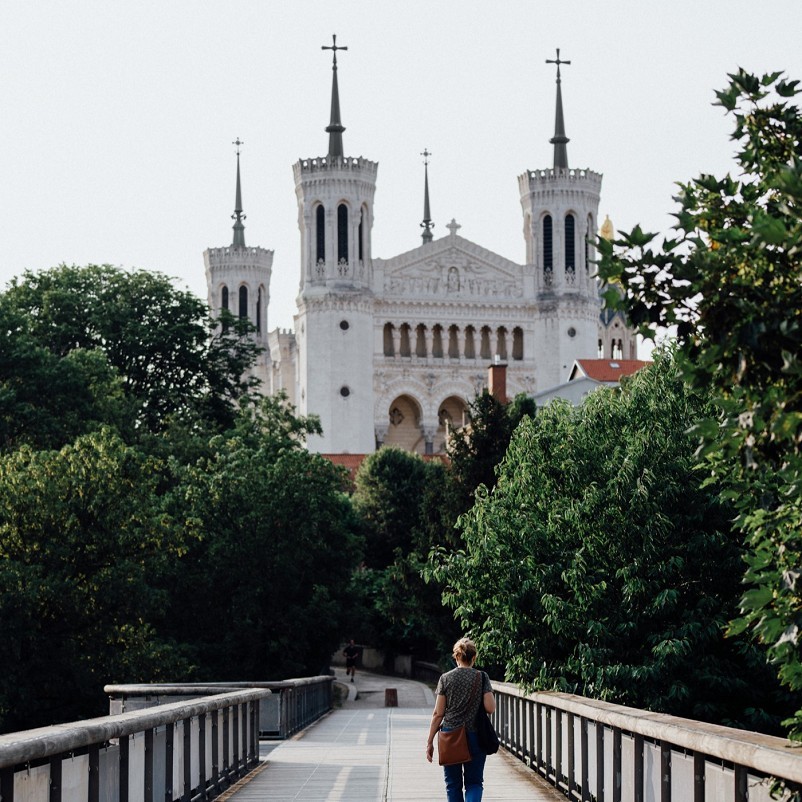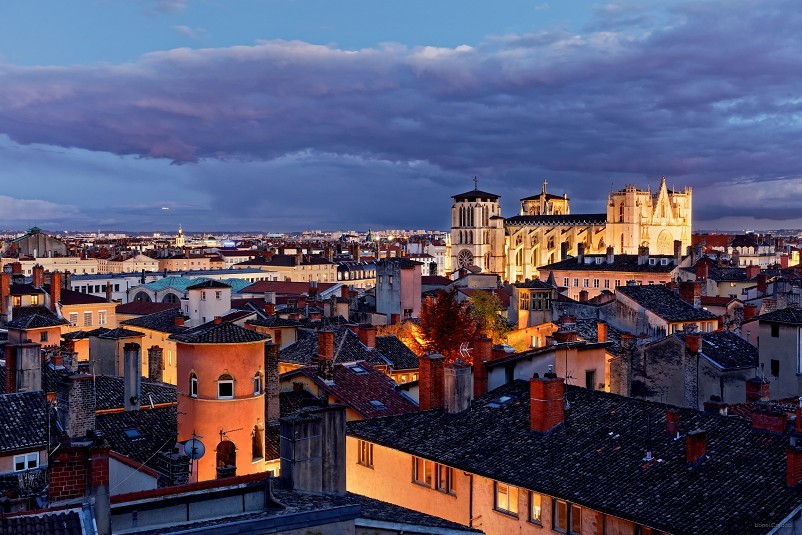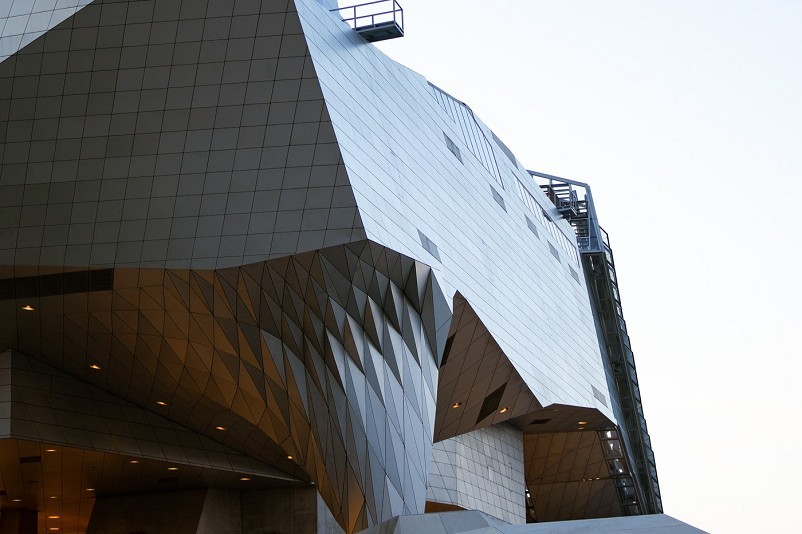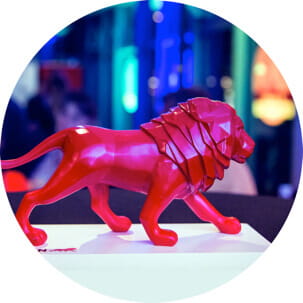Lyon is a city with a long history that has left many buildings from all periods since Antiquity. Nowadays, exploring the city is like visiting a museum, with so many incredible landmarks to discover. Do you want to find out more? Here are some of the most iconic buildings in Lyon!
The Roman theatre
The Roman theatre of Lyon, on Fourvière Hill, is one of the oldest in France. Built around 15 BC, it can host up to 10 000 spectators for dramatic performances. While it fell into disuse and was forgotten for centuries after the fall of the Roman Empire, it was rediscovered in the 19th century and restored between 1933 and 1946.
It is still in use today and is home to the Nuits de Fourvière, one of the most popular festivals in Lyon. With its breathtaking views over the city, the Roman Theatre is a must-see for all visitors and a reminder of its ancient origins when it was still known as Lugdunum.
Basilica of Notre-Dame de Fourvière
Perched on a hilltop, the Basilica of Notre-Dame de Fourvière dominates the skyline and is definitely one of the most iconic landmarks in Lyon. Built from 1872 to 1884 in a Neo-Bizantine style, it dazzles with its stained glass windows and elaborate pillars and ceiling. Its construction was decided after the Franco-Prussian War of 1870, as Lyon’s avoidance of attack was attributed to the intercession of the Virgin Mary.
The basilica can be seen from many places in the city. Climbing to the Fourvière Hill will let you enjoy magnificent views over the city and is a favourite spot for tourists and locals alike.


Saint-Jean-Baptiste Cathedral
In the heart of the Old Lyon stands the stunning Saint-Jean-Baptiste Cathedral, which blends Romanesque and Gothic architecture. Its construction took over 300 years to complete (1175 - 1480). It is renowned for its astronomical clock dating from the 14th century. As the seat of the Archbishop of Lyon, the cathedral has played an important role in the city’s religious life. Its sober Romanesque exterior and its Gothic interior make it a must-see for visitors exploring Lyon’s spiritual and medieval past. Its location in the oldest neighbourhood of the city makes it a great place to go while you explore its Renaissance streets.


Théâtre des Célestins
Near the place Bellecour, the Théâtre des Célestins is a 19th-century Italian-style theatre. The site has been hosting performances since the 18th century and it was rebuilt in 1881 after a fire. Gaspard André’s elegant façade and horseshoe-shaped auditorium combine tradition with intimacy. Having undergone multiple renovations, including a modern expansion in the 2000s, the theatre now boasts a blend of diverse architectural styles. With its velvet seats, ornate ceilings and varied cultural programming, the Théâtre des Célestins embodies Lyon’s deep-rooted connection to the performing arts.
Hôtel de Gadagne
The Hôtel de Gadagne is a Renaissance mansion located in the heart of the Old Lyon. Built in the early 16th century by wealthy Florentine merchants, it now houses two important museums: the Lyon History Museum and the Museum of Puppetry Arts. With its inner courtyard and spiral staircases, the building is a prime example of Renaissance architecture in the city. The building offers insights into the lives of Lyon’s influential merchant families and the city’s evolution over time. It even includes a rooftop garden, an emerald jewel in the middle of the city.
Place Bellecour and the King Louis XIV Statue
Place Bellecour is one of Europe’s largest open squares and a central meeting point in Lyon. Spanning 62,000 square metres, it connects the Presqu’Île district and is framed by elegant 18th-century façades. At its heart stands an equestrian statue of King Louis XIV, created in 1852 to replace an earlier version that was destroyed during the French Revolution. The square is also home to a statue of one of Lyon’s most famous people, with his best known character: Antoine de Saint-Exupéry and the Little Prince. This place is a real hub for festivals, the Christmas market and Lyon’s festive life.
Opéra Nouvel
The Opéra Nouvel is the opera house of Lyon, a surprising fusion of classical and contemporary architecture. Originally built in 1831, it was completely redesigned in the 1990s by the world-renowned architect Jean Nouvel. He preserved the original 19th-century façade while adding a striking glass dome and modern interior spaces. The result is a bold contrast between old and new, that perfectly reflects Lyon’s history and identity.
The Opéra Nouvel hosts internationally acclaimed productions of opera, ballet and concerts, establishing it as one of the city’s most important cultural venues.
Tour Part-Dieu
Commonly referred to as “Le Crayon” (“The Pencil”), due to its distinctive shape, the Tour Part-Dieu is Lyon’s most recognisable skyscraper. Completed in 1977, it stands at 165 metres and once held the title of the tallest building in France outside Paris. It houses offices and the prestigious Radisson Blu hotel, offering panoramic views from its upper floors. Located in the bustling business district, next to the Part-Dieu train station, it symbolises the city’s economic dynamism.
Through its distinctive, modern silhouette, it has become an iconic building in Lyon’s cityscape.


Orange Cube
The Orange Cube is a striking example of contemporary architecture in Lyon’s Confluence district, an area renowned for its innovative and modern designs. Completed in 2011 by architects Jakob + MacFarlane, the building features a bold, bright orange colour and a perforated façade that creates dynamic light effects throughout the day. Located along the Saône riverfront, its hollowed-out cube structure invites curiosity and admiration alike. Designed with sustainability in mind, it represents Lyon’s commitment to urban renewal and creative development.
Musée des Confluences
Located at the southern tip of the peninsula, where the Rhône and Saône river converge, the Musée des Confluences is a masterpiece of futuristic architecture. It opened in 2014 as a science and anthropology museum. The building’s dramatic angles, glass panels and metallic surfaces give it the appearance of a floating cloud or crystal.
The exhibitions explore questions about humanity, science and our place in the universe. The museum has become a landmark of 21st century architecture in Lyon, perfectly embodying the city’s embrace of knowledge, culture and avant-garde design.


Find out more about Lyon’s architecture by visiting the city
Isn’t Lyon’s architecture fascinating? If you want to find out more and experience the city for yourself, why not pay a visit? Every year, Lyon welcomes thousands of visitors who come to enjoy its culture!



